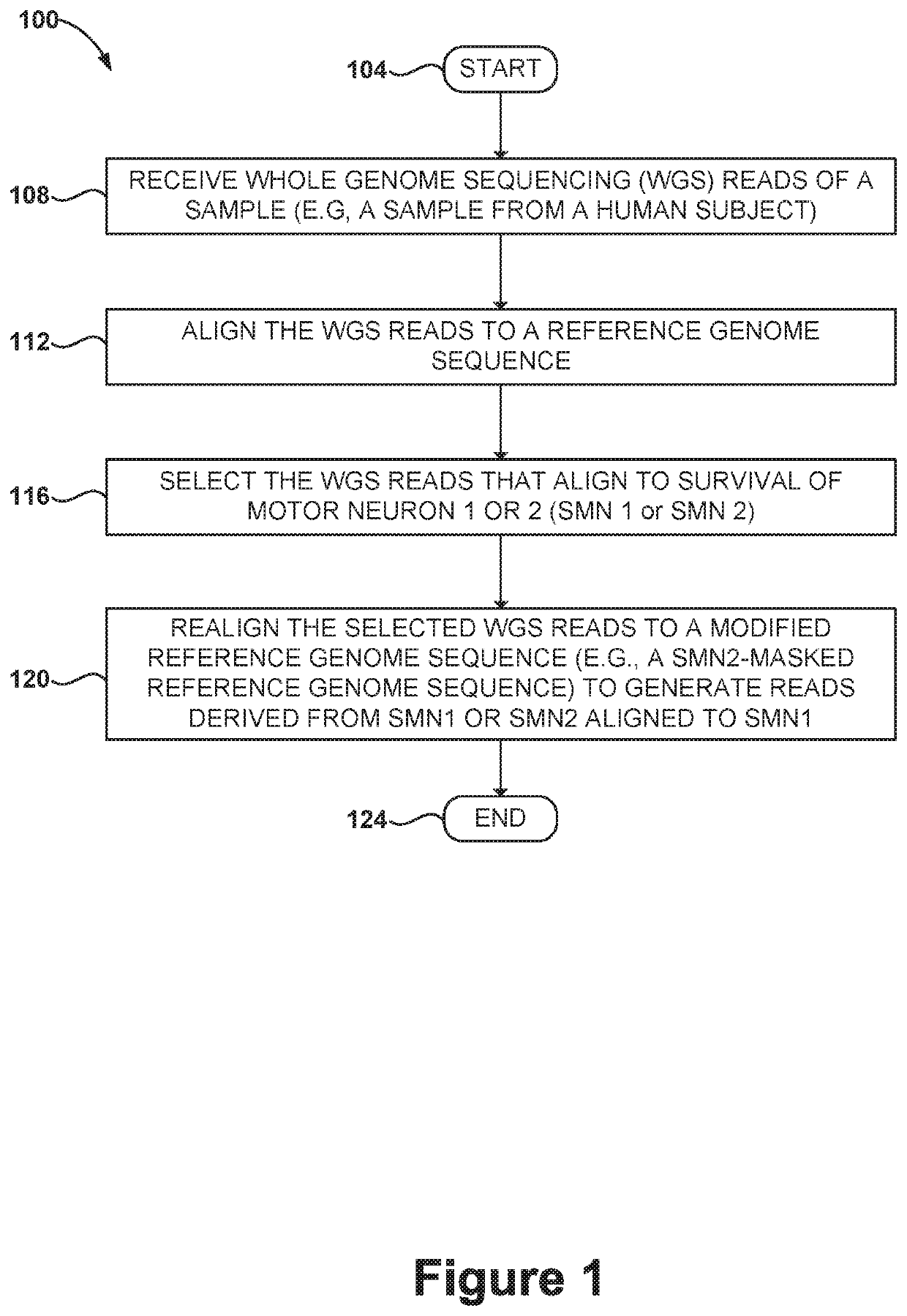Methods and systems for determining paralogs
a technology of paralogs and methods, applied in the field of disease diagnosis, can solve the problems of system-wide muscle wasting, early death, and loss of function of neuronal cells in the anterior horn of the spinal cord, and achieve the effect of reducing the number of patients
- Summary
- Abstract
- Description
- Claims
- Application Information
AI Technical Summary
Benefits of technology
Problems solved by technology
Method used
Image
Examples
example 1
Determining SMN1- and SMN2-Specific Copy Numbers
[0067]This example describes using quasi-alleles-supporting read counts at multiple positions to determine SMN1- and SMN2-specific copy numbers.
[0068]FIG. 8 is an exemplary plot of the sum of read counts supporting SMN2 vs. the sum of read counts supporting SMN1, which can be used to determine SMN1- and SMN2-specific copy numbers. Over 1300 samples were analyzed with whole genome sequencing using Illumina sequencers. Sequencing data from each sample were processed and analyzed by aligning the sequencing data to an SMN2-depleted reference genome as described with reference to FIG. 1 and determining the affected and carrier status of spinal muscular atrophy as described with reference to FIG. 3. Each point in FIG. 8 corresponds to a sample. The x value is the sum, over the “almost always het” sites, of the number of reads supporting the SMN1 reference “allele” at each position. The y value is the sum, over the same sites, of the number o...
PUM
| Property | Measurement | Unit |
|---|---|---|
| threshold | aaaaa | aaaaa |
| data structure | aaaaa | aaaaa |
| movements | aaaaa | aaaaa |
Abstract
Description
Claims
Application Information
 Login to View More
Login to View More - R&D
- Intellectual Property
- Life Sciences
- Materials
- Tech Scout
- Unparalleled Data Quality
- Higher Quality Content
- 60% Fewer Hallucinations
Browse by: Latest US Patents, China's latest patents, Technical Efficacy Thesaurus, Application Domain, Technology Topic, Popular Technical Reports.
© 2025 PatSnap. All rights reserved.Legal|Privacy policy|Modern Slavery Act Transparency Statement|Sitemap|About US| Contact US: help@patsnap.com



